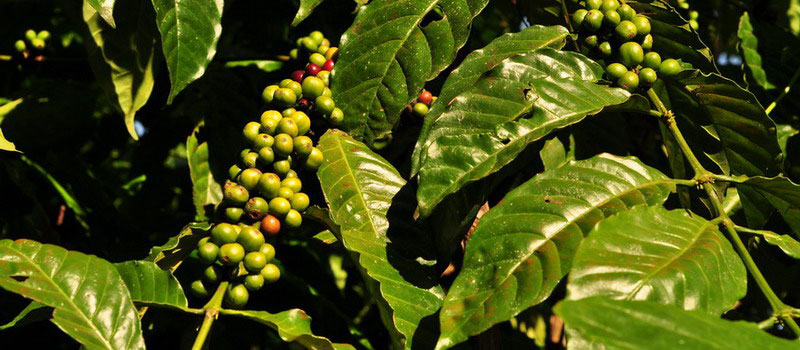Columbia boutique coffee producing areas Huila and Cauca Tolima
Boutique coffee (specialty coffee) is also called "specialty coffee" or "select coffee". It refers to coffee made from a small number of raw beans with excellent taste grown in an ideal geographical environment. Depending on the special soil and climatic conditions in which they grow, they have outstanding flavor. After strict selection and classification, this kind of coffee can be regarded as a selection of coffee beans because of its hard texture, rich taste and excellent flavor.
Colombia is divided into 32 provinces, Department of Tolima is located in the southwest, covering an area of 23500 square kilometers, adjacent to the well-known boutique coffee producing areas of Huila and Cauca. Ibague, the provincial capital.
In Tolima province, there are north-south Andes (M. Andes) and Cordillera (M. Cordillera). Between the two famous mountain systems is the Magdalena River (R. Magdalena) valley, which runs from south to north, with fertile soil, hot and rainy climate and dense population. Irrigated agriculture is developed, the output of rice and sesame ranks first in the country, and it also produces cotton, coffee, bananas, tobacco, sisal, corn, sugar cane, beans and so on.
The name Tolima comes from the earliest people who lived here, "Pijao people". In the language of this ancient people (Pijao word), tolima means "land of ice and snow", "snowed".
Tolima, adjacent to huila and cauca, is an area where many coffee-producing pilgrims need to make up their minds to travel. The road conditions here are not very ideal, and some of the talented people who have visited tolima all describe the bumps and hardships on the way to the car shop in their travels.
The farms in Tolima are generally slightly larger than those in other southern Colombian producing areas, ranging from 10 to 15 hectares. The cooperative approach is also popular here, where farmers send their small batches of fresh coffee and fruit to the cooperative's processing plant. Some farmers will also choose to deal with it on their own, making use of their own small-scale treatment facilities that can handle the harvest of the day. Carefully processed raw beans can be negotiated according to the cup test results, and a few batches that are outstanding will be kept as "micro batches", microlot, and sent to Bogota, the capital, for further cup testing. The rest of the raw beans are generally mixed and sold according to the cup test flavor.
Because of its high altitude, hot climate and abundant rainfall, it has created good conditions for the growth of boutique coffee. Even Starbucks, a well-known coffee chain, has launched Starbucks selection. Colombian Tolima Coffee this coffee.
Like other Colombian regions, the classic treatment here is water washing, that is, wet treatment. Dry in the sun.
Tolima, Colombia
Product name: Colombia Supremo SC 17 Tolima FNC 18
Altitude: 1200-1600m
Variety: Caturra,Castillo
Treatment: full water washing, sun drying
Producers: members from Cucuana Group, including 90 small-scale farmers.
Key words of cup test: floral fragrance, wonderful and lively acidity, sweetness of fresh honey, creamy mellow sweet orange, malt, caramel, balanced, soft

Important Notice :
前街咖啡 FrontStreet Coffee has moved to new addredd:
FrontStreet Coffee Address: 315,Donghua East Road,GuangZhou
Tel:020 38364473
- Prev

Introduction to the Origin and Flavor of Rwandan Coffee beans Lutexilo producing area in the western province of fine coffee
Herry Rojas Alvarez has been involved in coffee cultivation for 35 years. His parents began to teach him to love coffee and contribute to the coffee field when he was young, and now he has finally become one of the coffee experts who can cultivate high quality coffee. This is the second time that he has participated in Cup of Excellence, and this time he has passed the online auction.
- Next

Tanzania Kilimanjaro coffee medium that gives off sweetness and light sour taste after medium baking
Tanzania's main coffee producing area, located at the foot of Mount Kilimanjaro, is rich in volcanic soil. Some coffee trees planted here are more than 100 years old. Coffee was first introduced by Christians from Kenya to grow coffee. Coffee trees must be carefully taken care of, weeded and fertilized. And old branches must be cut off so that new branches can grow to maintain the quality of coffee beans.
Related
- Does Rose Summer choose Blue, Green or Red? Detailed explanation of Rose Summer Coffee plots and Classification in Panamanian Jade Manor
- What is the difference between the origin, producing area, processing plant, cooperative and manor of coffee beans?
- How fine does the espresso powder fit? how to grind the espresso?
- Sca coffee roasting degree color card coffee roasting degree 8 roasting color values what do you mean?
- The practice of lattes: how to make lattes at home
- Introduction to Indonesian Fine Coffee beans-- Java Coffee producing area of Indonesian Arabica Coffee
- How much will the flavor of light and medium roasted rose summer be expressed? What baking level is rose summer suitable for?
- Introduction to the characteristics of washing, sun-drying or wet-planing coffee commonly used in Mantenin, Indonesia
- Price characteristics of Arabica Coffee Bean Starbucks introduction to Manning Coffee Bean Taste producing area Variety Manor
- What is the authentic Yega flavor? What are the flavor characteristics of the really excellent Yejasuffi coffee beans?

